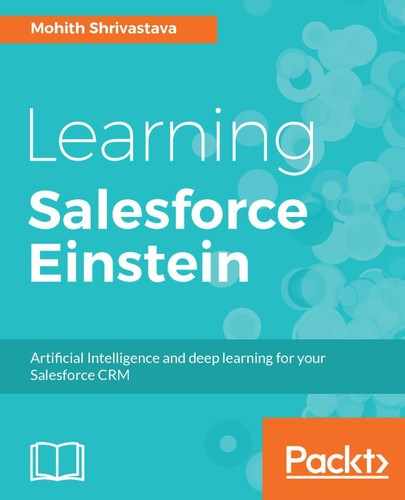The Visualforce page uses the Apex controller to bind data from the Salesforce objects through getters and setters (getters and setters are apex controller properties). Visualforce follows the MVC (Model-View-Controller) paradigm. The Model is the database object in Salesforce, View includes the HTML markup and Visualforce Tags, and Controller is an Apex class that handles business logic and interactions from the user and binds the data to the Salesforce objects. To create Visualforce, the developer can use HTML, CSS, and JavaScript, along with Apex for data binding. The following diagram shows how the Visualforce page acts as an intermediary between the server and client:

Visualforce pages are rendered on the server, but it uses the browser to display the content. The best advantage of using the Visualforce page is its ability to use third-party libraries, such as Angular, React, and so on. As the web is moving toward component-based models, and JavaScript as a technology is maturing faster, Salesforce is quickly moving toward the Salesforce JavaScript framework to build a single page application commonly known as the Lightning Component framework. We will cover the Lightning Component briefly in the next section, and, throughout the book, we will not use Visualforce; instead, we will build Lightning Components using the Salesforce modern Lightning Component framework. If you would like to know more about the Visualforce page, you can refer to https://developer.salesforce.com/page/An_Introduction_to_Visualforce.
